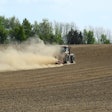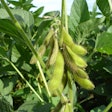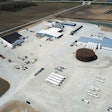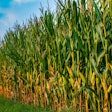
The National Grain and Feed Association (NGFA) recently released The Harvest Economy, a landmark economic impact study quantifying the vital role America’s grain and feed industry plays in jobs, wages, tax revenues and economic growth.
Conducted by John Dunham & Associates, the analysis is the most detailed look yet at the sector’s economic footprint at the national, state and congressional district levels.
The study’s headline number is $401.7 billion in total economic output — equivalent to 1.3% of U.S. gross domestic product. The industry supports more than 1.16 million jobs nationwide and delivers $85.9 billion in wages and benefits. It also pays $32.7 billion in taxes to federal, state and local governments.
 Mike Seyfert, president & CEO, NGFA
Mike Seyfert, president & CEO, NGFA
National and local impact
At its core, the report highlights the reach of the 9,683 grain and feed facilities scattered across the country. Those facilities directly employ 175,737 people, who earn an average of $84,768 annually.
But the economic effects ripple far beyond direct employment. Supplier industries — from transportation to financial services — add another 612,000 jobs, while the induced spending by employees creates 372,000 more.
The study underscores the grain and feed industry’s role as a backbone of rural economies. Every state and every congressional district registers a positive economic contribution from the sector.
“The activities the grain and feed industry performs — such as hiring engineers, scientists, marketing and business teams — account for direct effects on the economy. Regional impacts occur when these activities require purchases of goods and services such as real estate, equipment, or electricity from local suppliers,” the report notes.
Top 10 states
While the industry touches every corner of America, a handful of states lead the way in terms of economic output. According to the state-level analysis, the top 10 states by total output are:
- Iowa – $43.1 billion, 107,553 jobs
- Minnesota – $37.3 billion, 99,112 jobs
- Missouri – $35.0 billion, 96,396 jobs
 Pixabay.com
Pixabay.com - Illinois – $34.5 billion, 94,588 jobs
- Nebraska – $22.2 billion, 53,795 jobs
- Texas – $20.4 billion, 57,438 jobs
- Indiana – $20.3 billion, 55,546 jobs
- Ohio – $18.4 billion, 57,185 jobs
- California – $17.9 billion, 71,481 jobs
- Kansas – $14.8 billion, 45,850 jobs
Together, these states account for more than half of the industry’s national economic impact, reflecting their deep connections to grain production, processing and feed manufacturing.
Methodology and credibility
The first step in building The Harvest Economy was to define the U.S. grain and feed industry, which is more complex than most sectors given the numerous products and services provided by NGFA members.
Following consultations with association staff and industry experts, the industry was defined as any business that engages in services related to the production, processing, distribution and industrial use of grain and feed products.
Employment and economic impact numbers were then built with IMPLAN, a widely used input-output modeling system that measures not only direct employment and output but also supplier and induced impacts.
John Dunham & Associates relied on data from NGFA, federal government sources and Data Axle (the company behind Google Maps) to construct a facility-level database. Facilities were verified against company websites and federal data to ensure accuracy.
This conservative methodology helps explain why the study’s multipliers — how much each dollar of direct spending generates in the broader economy — are lower than some other industry studies. For example, the induced impact multiplier is about 0.53, a figure the authors argue is more realistic than the inflated multipliers often found in economic impact reports.
Looking ahead
NGFA launched a redesigned website in conjunction with the study, giving policymakers, reporters and industry members an interactive platform to explore the data. Users can view fact sheets and run reports by state and congressional district, offering a detailed picture of local economic contributions.
For NGFA, the study provides a powerful advocacy tool. By putting hard numbers behind the industry’s role in sustaining jobs and tax revenues, it helps reinforce the message that grain and feed companies are not only essential to agriculture but also to the broader U.S. economy.
“Our industry powers communities and provides direct investment across all of rural America," Seyfert said. "With this new study, we can clearly demonstrate just how vital we are to America’s economic engine.”



















